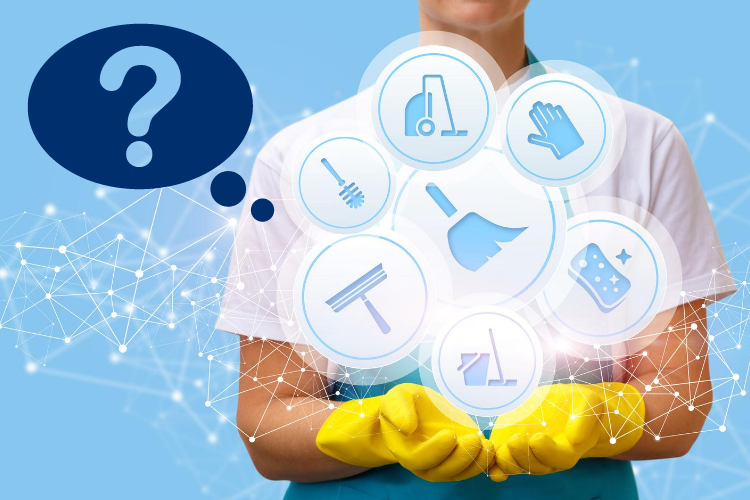Cleaning may seem like an easy task with little question as to how to do it properly. However, with the threat of COVID-19 still present, understanding the truth around certain myths about cleaning and disinfecting is important for the health and safety of you, your family, employees, students, visitors, patrons, and others.
Here are seven common myths about cleaning and disinfecting that could help make your environment safer and healthier.
Myth #1: Cleaning, sanitizing, and disinfecting are the same
Truth: Many people will use the words cleaning, sanitizing, and disinfecting interchangeably. However, while these are all important steps in keeping any space clean and safe, they do indeed have different meanings and purposes.
- Cleaning removes germs, dirt, and impurities from surfaces or objects. Cleaning works by using soap (or detergent) alongside water to physically remove germs from surfaces. This process does not necessarily kill germs, but by removing them, it lowers their numbers and the risk of spreading infection. For example, washing your kitchen counter down with a soapy washcloth would be considered cleaning. You will likely see crumbs or bits of debris on the cloth when finished.
- Sanitizing lowers the number of germs on surfaces or objects to a safe level, as judged by public health standards or requirements. This is done by either cleaning or disinfecting something to lower the risk of spreading infection.
- Disinfecting kills germs on surfaces or objects by using chemicals. Disinfecting does not necessarily clean dirty surfaces, but by killing the germs on a surface after cleaning, it can further lower the risk of spreading infection. For example, using an EPA approved disinfectant such as like Clorox Disinfecting Wipes to wipe down a toilet seat is considered disinfecting. You would not see any residue on the wipe afterwards, but the chemicals in the disinfectant have done their job.
Myth #2: Bleach cleans everything
Truth: Bleach is a disinfectant, not a cleaning solution. Bleach will certainly whiten the stain on a shirt and kill the germs in your trashcan, but it is not the way to go if you are looking to get a tough patch of dirt off your counter or sink. Using bleach to clean is akin to using hand sanitizer to clean your hands after gardening.
Myth #3: Vinegar cleans everything
Truth: Vinegar is great for certain things, like removing grease stains and unclogging drains, but, as it is acidic, it can damage surfaces, such as hardwood and marble.
*Never mix bleach and vinegar together, as this creates chlorine gas, which is extremely toxic*
Myth #4: Vacuum cleaners damage carpets
Truth: Some people believe that vacuuming a carpet too frequently can cause unwanted wear and tear to the carpet. On the contrary, not vacuuming a carpet frequently enough can lead to a buildup of dust and abrasive particles, which will ultimately break down the carpet. Regular vacuuming is the best way to keep a carpet clean.
Myth #5: Feather dusters remove dust
Truth: For the most part, feather dusters simply spread dust around, moving it from one surface to another. Sure, the area you have just dusted now appears to be dust-free, but the air around it is now full of tiny dust particles, which will eventually settle back down, creating more dust. Not to mention, the feathers are also now full of dust, which will then be spread to other areas. A better way to remove dust is to use a damp cloth or microfiber duster, both of which are more effective and eco-friendly methods.
Myth #6: Newspaper is a good option to create streak-free glass
Truth: While once true, this “cleaning hack” is no longer valid. It is true that in the past, newspapers were made from ink and paper that did in fact reduce streaks on glass. However, over time, the paper and ink used has changed and no longer has the desired effect of streak-free glass cleaning. Furthermore, damp newspaper can easily cause the ink to bleed, creating even more of a mess.
Myth #7: Hairspray removes ink
Truth: In the past, hairsprays were made with a much higher alcohol content, and were thus ideal for removing ink stains. As time went on, the percentage of alcohol used in hairsprays was greatly reduced, and thus, this is just another myth in the current day.
Commercial Cleaning Corporation’s goal is to not only provide excellent service to clients, but also to educate and inform. Whether you need your company’s carpet cleaned or your questions about bleach answered, Commercial Cleaning Corporation is here to offer easily accessible resources and support to meet your needs.

